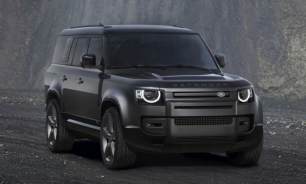This is mostly a smooth driving wagon while tackling daily duties on the blacktop and with some highway stretches thrown into the mix.
Steering has a nice weight to it and the Pajero Sport is a nimble, highly manoeuvrable SUV, with a turning circle of 11.2m, even if it does start to reveal more than a bit of body-roll through more aggressive driving. No surprise and no worries – this is an SUV after all, not a sports car.
Also, worth noting is the fact that our test vehicle’s alloy bullbar made it heavier at the front end thus affecting its handling somewhat.
Throttle response is sharp and the 2WD Pajero Sport retains the line-up’s punchy turbo-diesel engine and teamed with the eight-speed auto it makes for a quietly effective, rarely stressed working partnership, rather than an energetic match-up.
The suspension set-up here – double wishbones with coil springs and stabiliser bar at the front, and three-link, coil springs and stabiliser bar at the rear – yields a very firm ride and one which can tend towards jarring if you’re traversing chopped-up back-country bitumen or really anything beyond bitumen that's in good nick.
The tyres – Toyo Open Country A32 (265/60R18) – are well-suited to bitumen, not so much to off-roading, which is perfectly reasonable for this 2WD vehicle. Also, this rubber is on the correct side of quiet.
As mentioned earlier, Mitsubishi’s Super-Select II 4WD system is missing from this variant, obviously, as this is a 2WD. And that’s a crying shame because even if you never venture off the road, Super-Select II is very handy. In Pajero Sports equipped with it, you can drive in 4H (4WD high range) even on bitumen or any high-traction surface because 4H in this vehicle means that – and I’m directly quoting Mitsubishi’s offical system explanation here – “all wheels are driven via the transfer case with an open centre differential, this means all four wheels will send power to the ground while still operating independently of one another”.
If you drove like that in most other 4WDs – at speed in 4H on bitumen or the like – you’d risk transmission wind-up, but there’s no danger of that in a 4WD Pajero Sport because its centre diff is open, not locked, when 4H is engaged.
This gives the driver increased traction and so better control and that means it’s a safer all-round driving experience for everyone involved.
Unfortunately, none of those benefits are available in this 2WD variant.
Having said all of that, this Pajero Sport is very drivable, functional and still manages to retain respectable, if not high, levels of refinement.
















.png)














